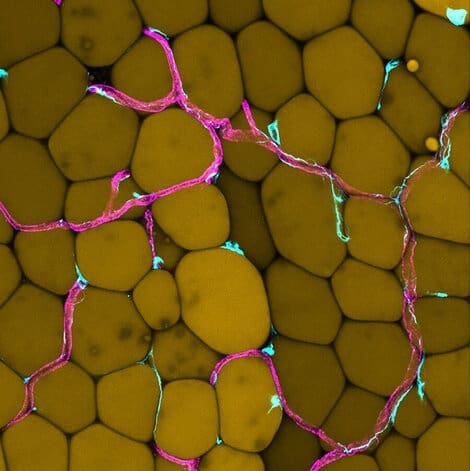Abdominal fat endangers blood vessels: new findings from GûÑttingen
Obesity damages blood vessels, but the type of damage depends heavily on where the fat accumulates in the body. This is shown by a study conducted by the University Medical Center GûÑttingen (UMG) and the German Center for Cardiovascular Research (DZHK) in collaboration with an international research team. Abdominal fat in particular, also known as visceral fat, promotes a remodeling of the blood vessels in overweight people, which causes inflammation and functional disorders and promotes cardiovascular diseases in the long term. In subcutaneous fat, on the other hand, the researchers found special blood vessel cells, so-called fenestrated endothelial cells, which have a positive effect in a healthy state, but which decline sharply with obesity.
The study shows for the first time that white adipose tissue in abdominal and subcutaneous fat reacts differently to overeating, leading to varying degrees of vascular damage. These changes start earlier than previously thought and depend on the location of fat accumulation. A key molecule called VEGFA was found to be crucial for maintaining healthy vascular structures. When VEGFA levels fall as a result of a high-fat diet, blood vessels lose their function, a mechanism that has been demonstrated in both animal models and human adipose tissue.

“This mechanism is not only detectable in animal models, but also in human adipose tissue,” says Prof. Andreas Fischer, Director of the Institute of Clinical Chemistry at the University Medical Center GûÑttingen (UMG). “This opens up new approaches as to how we can maintain or restore vascular health in obesity.”
Using state-of-the-art single-cell analyses, imaging techniques and genetic experiments, the study offers new insights into obesity research. The results could form the basis for therapies that specifically improve vascular health and prevent secondary diseases such as diabetes or heart attacks. The findings underline the fact that blood vessels play a central role in research into obesity and metabolic diseases.
Original Paper:
Editorial office: X-Press Journalistenbû¥ro GbR
Gender note. The personal designations used in this text always refer equally to female, male and diverse persons. Double/triple references and gendered designations are avoided in favor of better readability.




